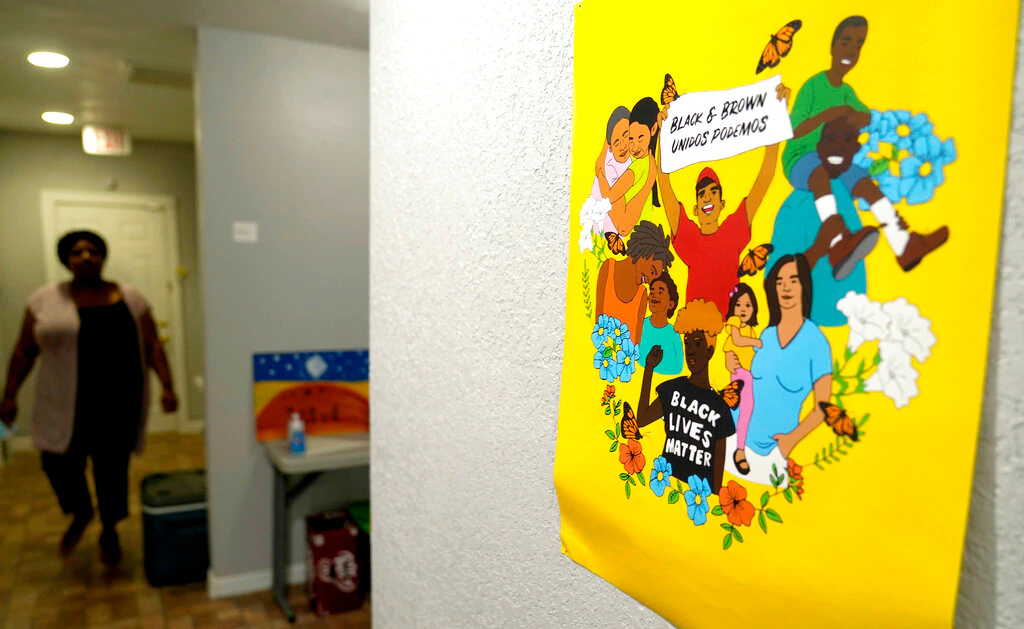The United States is growing more racially diverse as the white population declined over the past decade for the first time in the country’s history, a new detailed look at the 2020 Census shows.
The Census Bureau said Thursday that its once-a-decade head count showed 331.4 million people living in the U.S. last year, up just 7.4% since 2010. It was the slowest growth in any decade since the census was started in 1790, except during the Great Depression in the 1930s.
But the racial and ethnic makeup of the country was changing; people were moving more frequently to metropolitan areas, often to the Southern and Western states; and Americans were often leaving smaller communities, further diminishing their populations.
People identifying as white remained the largest population group in the U.S. — 204.3 million — but the total was down 8.6% from 2010.
The next largest group, people who identified as Hispanic or Latino, totaled 62.1 million in 2020, a segment of Americans that grew 23% during the decade.
People identifying with two or more racial heritages totaled 33.8 million, a 276% increase over 2010. African Americans totaled 46.9 million, but as a group trailed people who identified as “some other race” or in a combination group, at 49.9 million. Asian Americans totaled 24 million, American Indian and Alaska Natives were 9.7 million, and the “Native Hawaiian and Other Pacific Islander” alone or in combination group, 1.6 million.
Some demographers say the white population could still be the largest single group by 2045 but will likely be outnumbered by a mix of other racial groups, including Latino, Black, Asian American and others.
Half or more of the population growth among U.S. minorities in the past decade came from Hispanics, who have doubled their share of the country’s population over the past three decades.
Rural communities in the U.S. were depopulating from 2010 to 2020. More than half of U.S. counties (52%) had smaller populations by the end of the decade.
The list of the 10 biggest cities in the country remained unchanged over the past decade, with New York City at the top with 8.8 million residents. All 10 of the biggest cities had a million or more residents for the first time, with the fastest big-city growth (11.2%) in Phoenix, Arizona, in the Southwest.
Census officials said the head count showed 312 of the 384 U.S. metropolitan areas gained population between 2010 and 2020, with 72 losing residents. The fastest growing population center was The Villages in Florida, a retirement community popular with Northerners looking to move to Florida for its warm winters. It grew 39% from about 93,000 people to about 130,000.
Redistricting
Aside from a snapshot of who Americans are, the census data will play an important role in U.S. politics. State lawmakers across much of the country – or politically independent commissions in some states – will use the information to redraw the geographic lines for congressional and state legislative districts that in most cases will likely be used in elections through 2030.
Both Republicans and Democrats have often tried to draw the lines to their advantage where they control state legislatures, crowding as many of their opponents’ likely voters as they can into a handful of electoral districts in hopes of winning most of the others.
A small number of states, however, have adopted the use of independent commissions to redraw their legislative districts, hoping to make the once-a-decade process fairer to both political parties.
In any case, the redrawing of districts each decade spawns numerous lawsuits from both parties, each alleging that the other has unfairly skewed the process in its favor, leaving it to judges to make final determinations of the exact geographic lines.
The redistricting set to take place throughout much of the country in the coming months is expected to be particularly contentious this time.
In November 2022, political control of Congress is at stake, with all 435 House seats up for election and Republicans needing to pick up only five seats to win control from the Democrats. Analysts say Republican-controlled state legislatures could secure that many through redistricting alone.
A third of the seats in the Senate, now divided evenly with 50 Republicans and 50 Democrats, are also up for grabs, but the census has no bearing on the voting, since each state is represented by two senators, regardless of population.
In the House, demographic shifts in the U.S. will affect the number of House seats in 13 states, with Republican-controlled Texas gaining two seats, five states each gaining another congressman and seven states losing one each.
The bigger population growth in Southern states in the past decade, where congressional representation is growing, would seem to favor Republicans, while lesser growth in Northern states could mostly hurt Democratic election chances in upcoming years.
















































